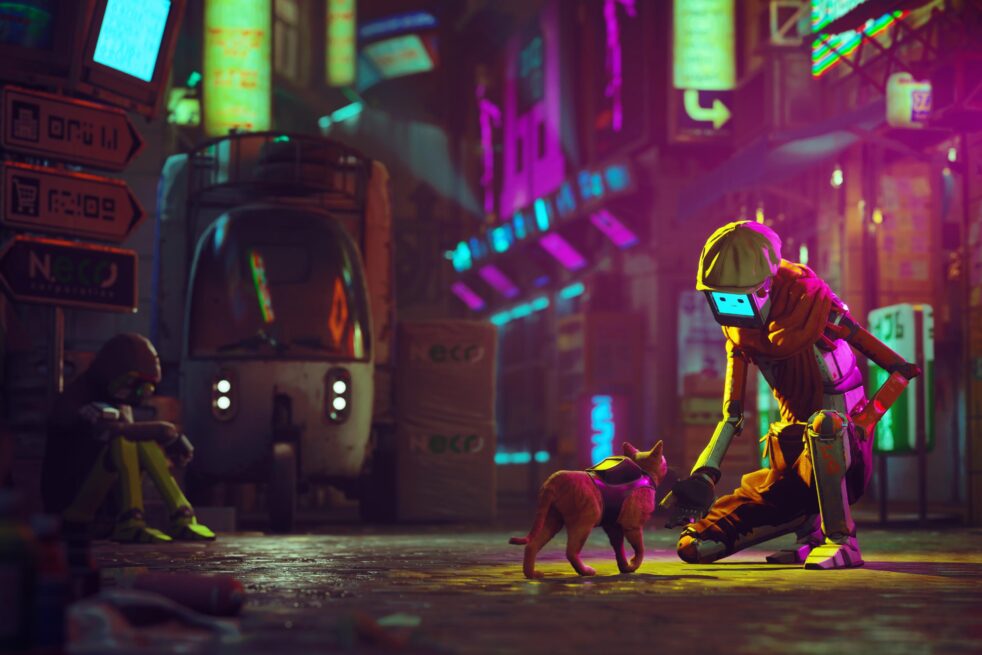Our Take: 3/5 Stars
“Stray” is not conceptually groundbreaking — the apocalypse has occurred, everything living has died and robots roam the earth in their place. The cliché goes that if robots were to be the successors to humans, they would inherit humanity’s desire to dominate and ultimately be the ones to kill the humans.
In “Stray,” robots have nothing to do with humanity’s demise at all — instead, the culprit is a life-eating, rat-like pest that infects much of the earth. In fact, there is an endearing novelty to the way the robots in “Stray” interact and speak. They have a childlike curiosity about humans; you spend many quiet moments reading their murals and diary entries reflecting on what life must have been like for humans or showing their respect and adoration for them.
Much of the game consists of these little introspective snippets and frequently impart a pleasant appreciation of one’s own life.
As for how the game plays, boy, can you jump! Rooftops, dangling pipes, powerlines — this cat goes anywhere it pleases. Most areas are open world, encouraging you to scavenge for missing music sheets for the local musician, walk all over computer keyboards and bat as many breakable objects off countertops as you want.
However, the protagonist being a cat definitely creates some limitations; there is not a lot of combat, and enemy fights usually come in the form of running to safety or slow, deliberate use of tools to clear a path.
The “monsters” are not really that scary, and the enemy areas are actually a less engaging aspect of the game due to their low stakes and simple nature.
The graphics, however, are amazing and contribute to some great world-building. Since all the characters are trapped inside a closed-off city, everything feels cramped and overwhelming but in an intentional, non-distracting way.
This game wants you to look at it, so the cutscenes are slow, forcing you to take in the scenery and the details.
You could probably get through the whole game in three hours or so. However, by exploring and talking to every character and finding every collectible, you can probably spend up to nine or 10 hours completely traversing the game and its environment.
“Stray” is a simple game with a simple story, but it goes about telling that story in an alluring, unconventional way: through the eyes of a mostly harmless, quiet creature.
The best parts, as in most other games as well, are the exploring and the side plots, which create a more immersive, holistic world.
“Stray” is such a lovable game with its very own personality! It makes you think — but not too hard — and it’s got a mischievous little feline friend that you, ultimately and easily, come to adore.
